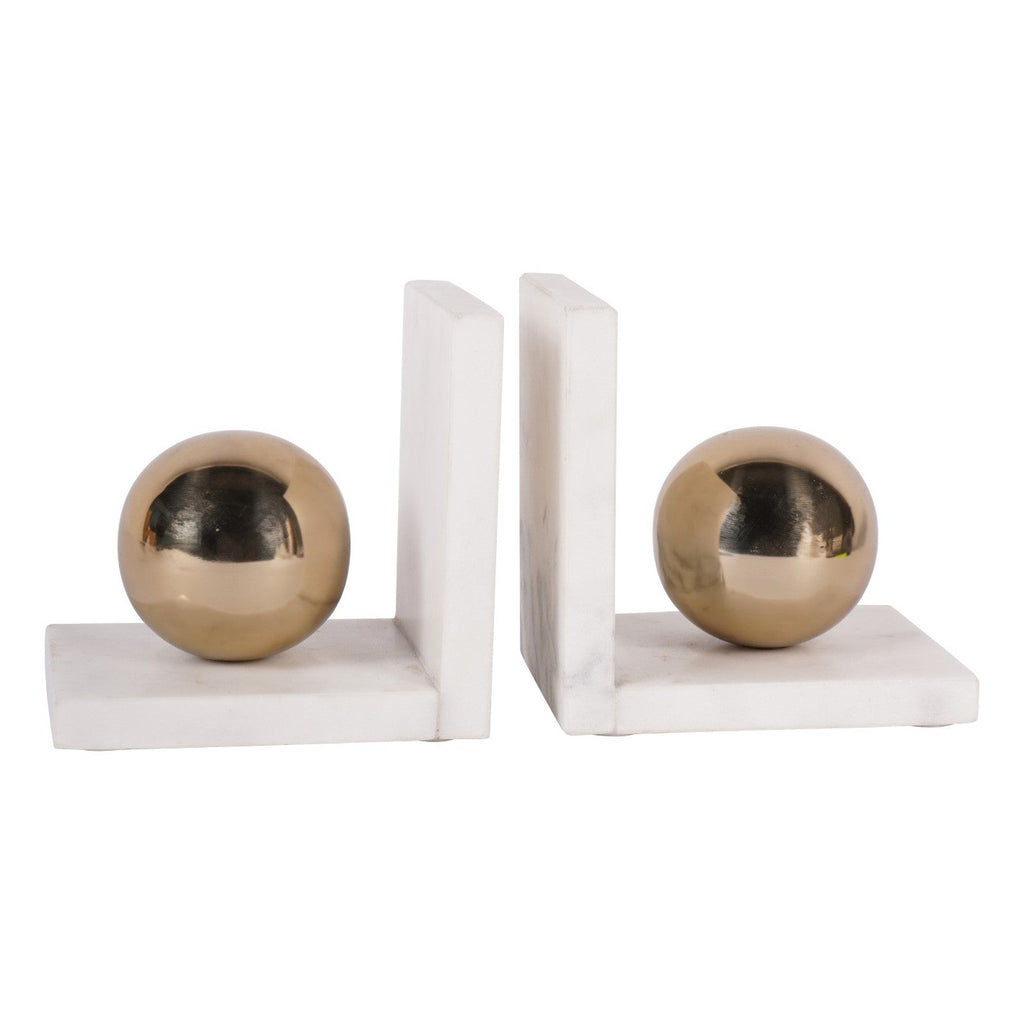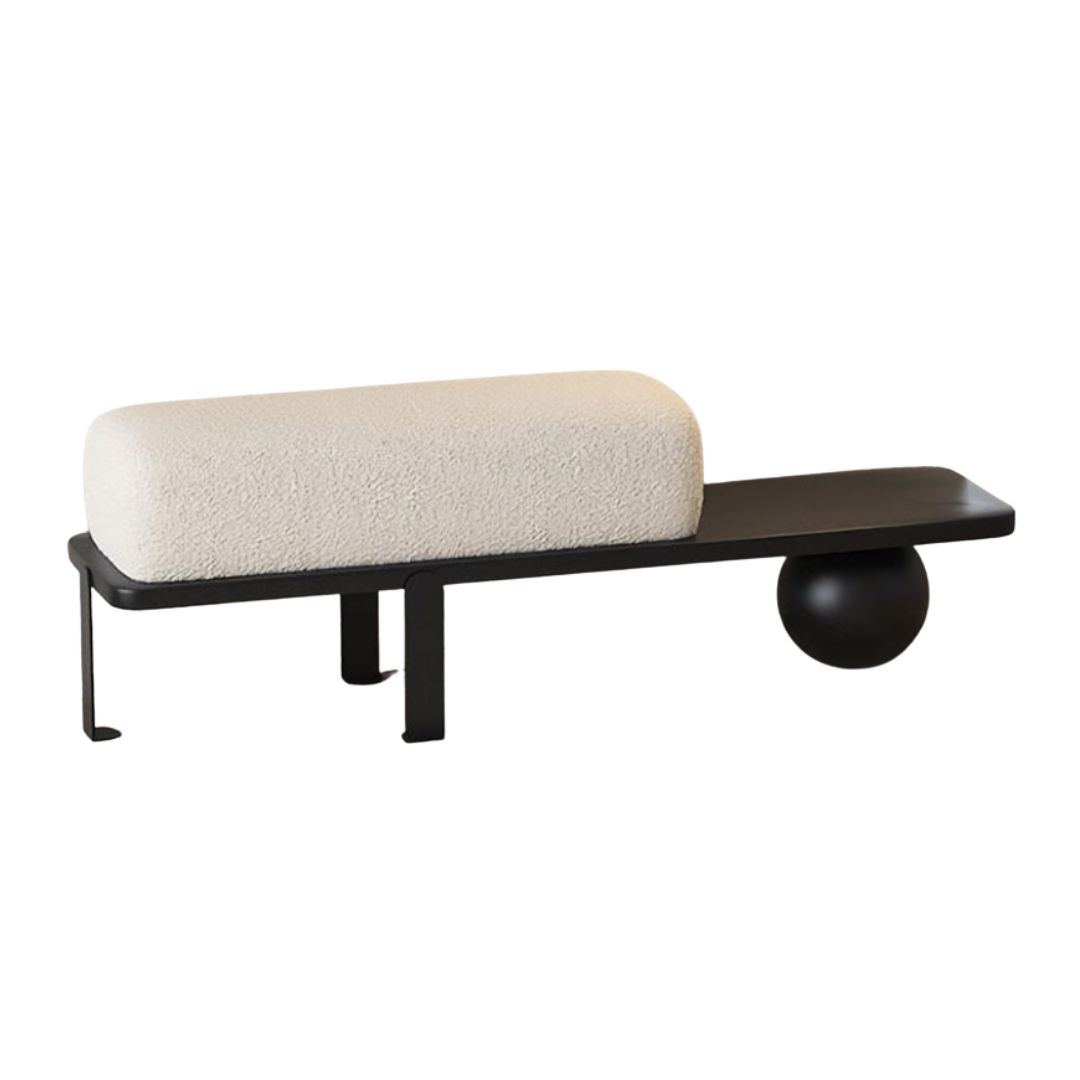10 Creative Ideas for Your Staircase's Flooring — Because Carpet Runners Aren't the Only Option
Make every step count with these bold, beautiful, and clever stair flooring ideas to try right now
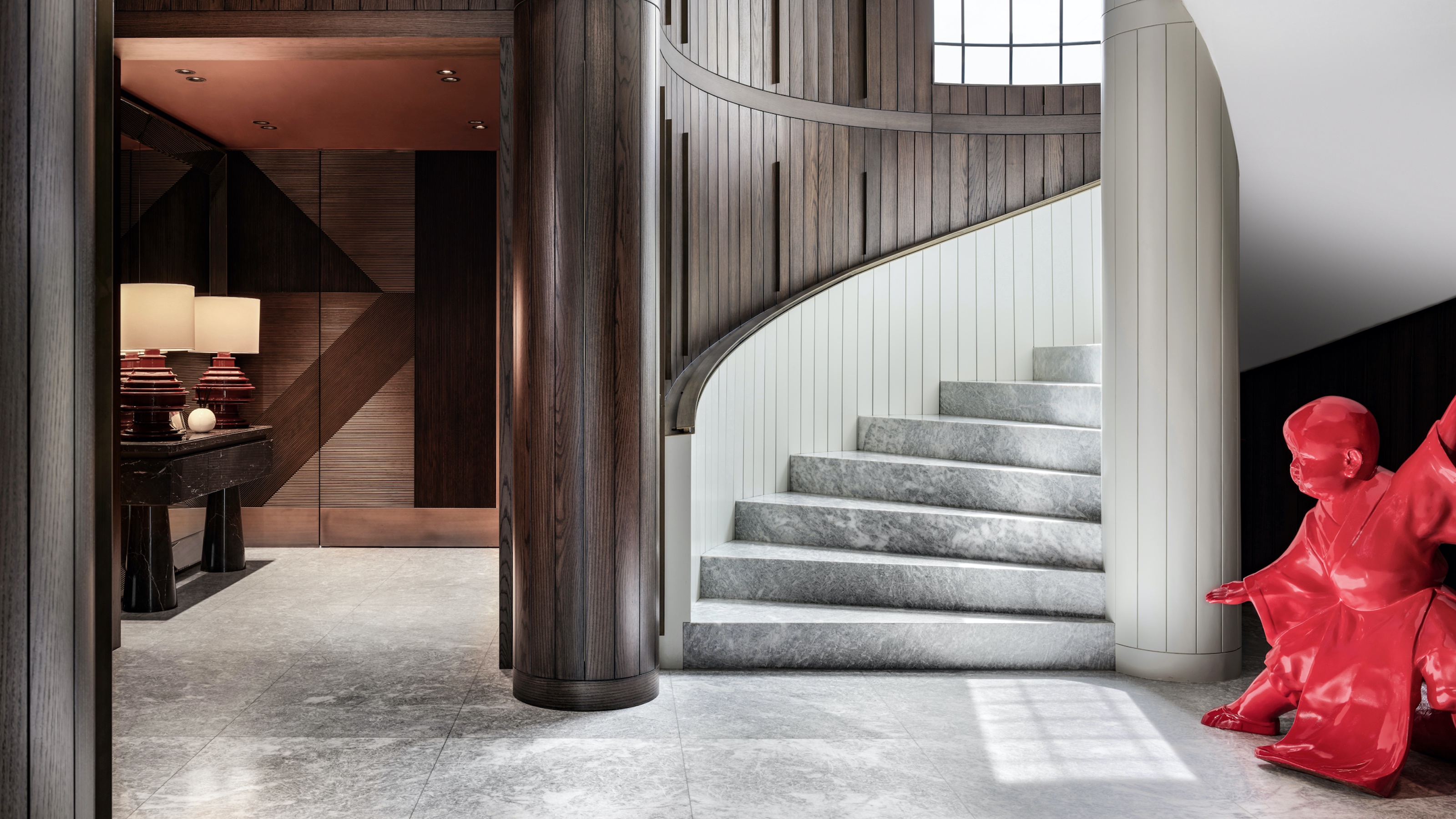

With the exception of droolsome designer runners, most of us pour all our stair design energy into the spindles, banisters, panelling, and handrails. The architectural bits we see at eye level get all the glory, while what’s happening underfoot is often an afterthought.
But flooring plays a major part in how a staircase looks and feels. Whether it’s the first thing you see in a hallway or winding its way up through an open-plan space, a different flooring choice can completely shift the direction of your staircase ideas. Luckily, today’s options extend beyond carpet or bare treads. From practical choices for high-traffic family homes to sculptural finishes that act like art, there’s really no excuse for boring steps. It’s all about finding the sweet spot between texture, tone, and tread.
Plus, comfort matters more than you imagine. The ideal stair tread is around 20–25 cm (8–10 in) deep with a rise of roughly 18 cm (7 in) — too steep and you’ll require glutes of steel, too shallow and things will get seriously trippy. So, while this feature is packed with aesthetic inspo, we’re not skipping the sensible stuff. Your stairs should look the part and feel easy to climb, even when your hands are full of laundry or the clutter that’s been waiting on the bottom step for three weeks. Ready to get floored by our fabulous design ideas?
1. Opt for Tiles

Wondering how you can make your staircase look better? Well, tiled stairs are super popular on the Continent, and it’s easy to see why. From glossy metro tiles to intricate patterned porcelain, cladding treads and risers in tiles brings maximum personality with minimum maintenance. In this space, plain tiles on the treads keep things grounded, while the Mediterranean-inspired patterned risers bring all the vacation vibes. It’s this kind of detail that turns a functional zone into a focal point.
“There’s something undeniably joyful about tiled stairs,” says Lesley Taylor, Creative Lead at Baked Tile Co. “They catch the eye in all the right ways, adding pattern, colour, and a bit of personality to a space that’s often overlooked.” It’s also a smart choice practically speaking. Tiles are tough, wipe-clean, and great for busy homes, just make sure you get tiles with good slip ratings.
“We’re seeing more people treat their stair risers like a canvas, whether that’s with a single repeating tile design or a mix-and-match patchwork effect. The trick is to think about flow: how the tiles connect to the flooring above and below, and how they sit within the overall scheme. And if you’re using patterned tiles, let them lead; keep walls and balustrades simple to let the stairs do the talking.”
2. Roll Out the Carpet
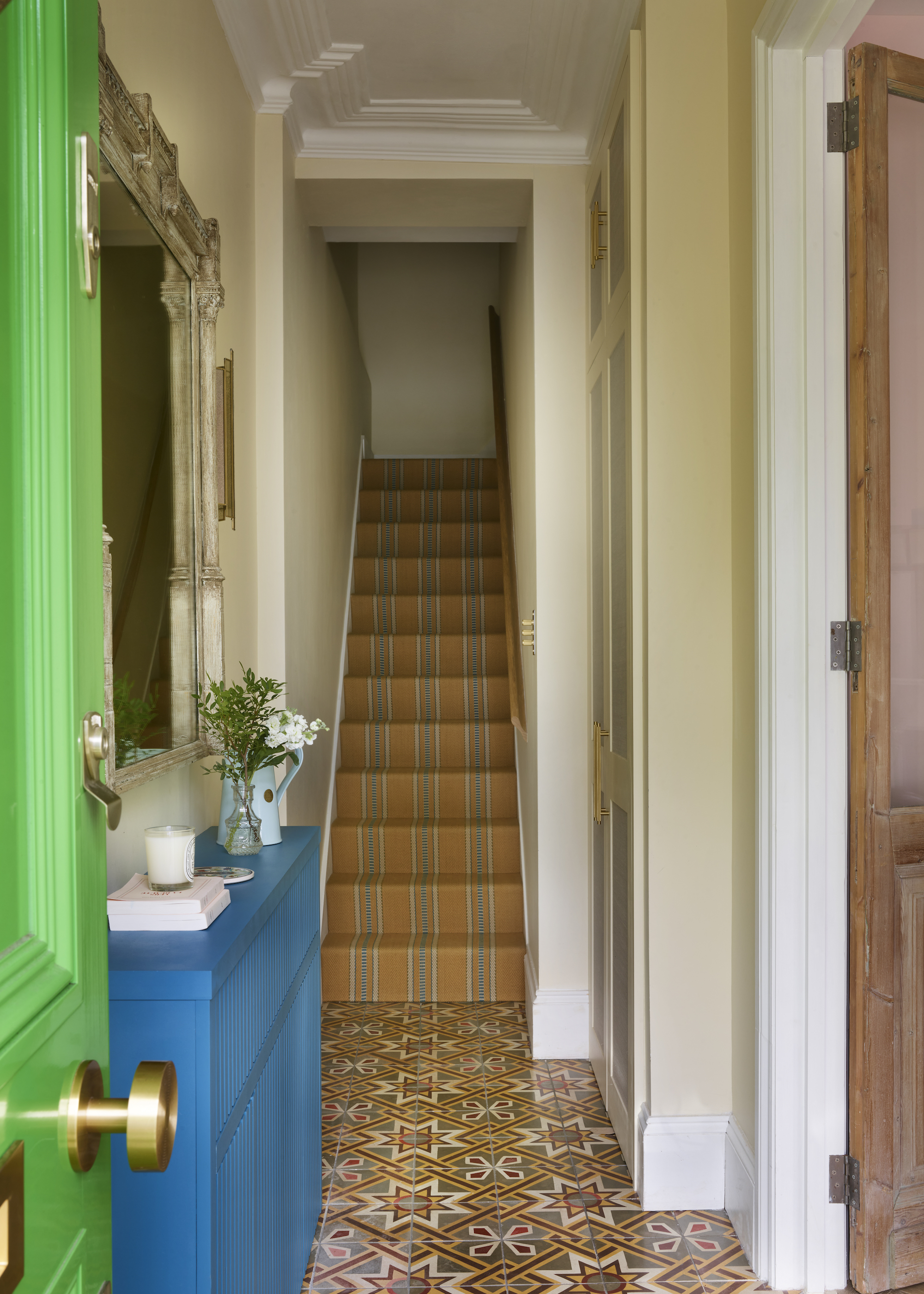
There’s a reason we keep coming back to staircase carpet ideas. They’re soft, warm and quiet underfoot, and lend cosy good looks. Whether you go for a full-width fit or a chic runner, carpet adds colour, texture, and that lush, tactile quality no hard surface can match. It’s also super practical, helping to soften noise, which is especially handy in those often echoey hallways, help reduce slips, and will cushion falls — perfect for homes with little ones tearing up and down the stairs.
The Livingetc newsletters are your inside source for what’s shaping interiors now - and what’s next. Discover trend forecasts, smart style ideas, and curated shopping inspiration that brings design to life. Subscribe today and stay ahead of the curve.
In this Victorian terrace, interior designer Carina Raymond chose a made-to-order flatweave wool carpet to inject personality and solve a problem. “Initially we wanted to put a runner on the staircase, however, as the staircase treads were in such a bad condition, it would have been too costly. So, we made the decision to opt for a full-width runner instead,” she explains.
The bold stripes in olive green and turquoise nod to existing encaustic floor tiles, while gold tones link to the upper-floor palette. “We wanted to inject some fun and colours into the space and also make sure that it ties in nicely with the rest of the schemes running throughout the house,” says Carina. Pros? Warm, cushioned, and great at hiding imperfections. Cons? Needs regular vacuuming and isn’t ideal for mud-prone households. But as far as comfort and color go, carpet’s got it covered.

Carina is the founder of Studio Raymond, a London-based interior design studio specialising in residential projects she established in 2021. With a background in investment banking, she brings meticulous precision to her work, blending contemporary design with antiques and vintage pieces to create timeless, personalised spaces that reflect each client's unique character and lifestyle
3. Go for Wood, but Make It Engineered
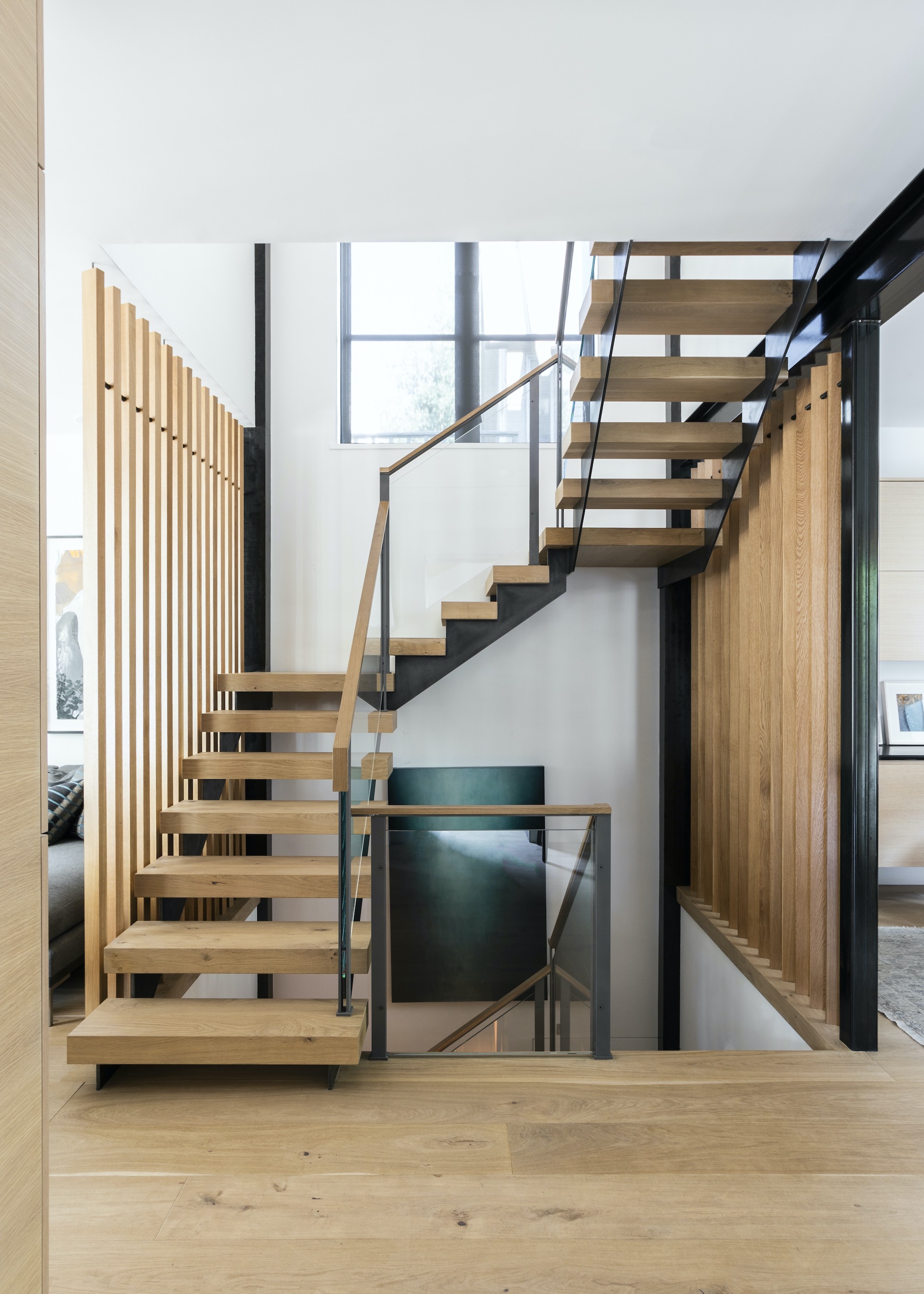
Engineered wood flooring is a bit of a no-brainer if you want the look of solid wood without worrying about warping. “It gives you all the beauty of real wood, but it’s much more stable,” says Linda Eyles, founder of Linda Eyles Design.
This fabulously chunky timber stair flooring is proof. Built using the same white oak engineered boards as the flooring above and below, they create a smooth, unified look across the whole space. “We wanted that clean, consistent look throughout,” explains Linda.
Compared to solid slabs of wood, engineered flooring is less likely to warp or shrink, which is especially handy in homes with underfloor heating or humidity swings. On the downside, you can’t sand engineered planks back to restore the finish as many times as stairs made from solid wood, but IRL you’ll probably never need to.
4. Step Up the Luxe With Marble
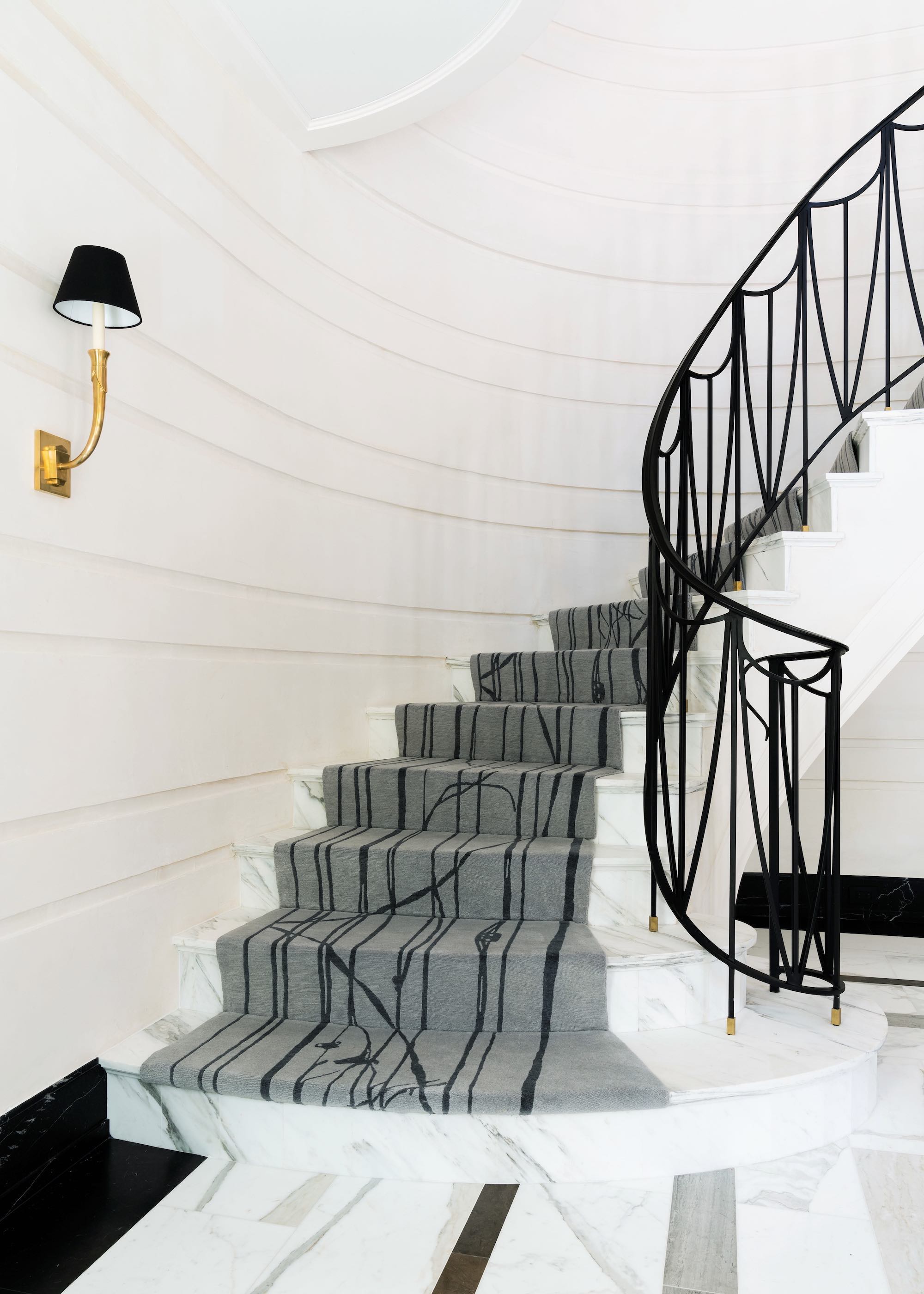
Marble stairs aren’t just for grand mansions and swanky hotels — they’re a strong move for anyone craving a clean, sculptural look with major luxe appeal. Danby marble, quarried in Vermont (and used in the Lincoln Memorial and the White House), is architect Nadia Palacios’ marble of choice, thanks to its pale tones, subtle veining and surprising toughness. “We chose this marble because it brings a subtle elegance to the stairwell and makes the perfect complement to the plaster walls because of its clarity and soft veining,” she explains.
Unlike more delicate marbles, Danby holds its own in busy spaces, making it a practical pick for stair treads that see serious footfall. “Danby marble is known for being fairly durable and less porous than other marbles, which makes it a strong choice for a high-traffic space like this one,” Nadia adds. To soften the feel, and boost grip underfoot, a sleek runner in pure wool is a smart, stylish addition. Sure, isn’t the most budget-friendly stair flooring option, but visually it absolutely slays.

Nadia Palacios Lauterbach is a registered architect in Texas and Colorado known for her detailed approach to architectural work. NPRD is a multi-disciplinary studio, working between architecture, interior design and landscape design to offer a holistic experience.
5. Match Your Walls
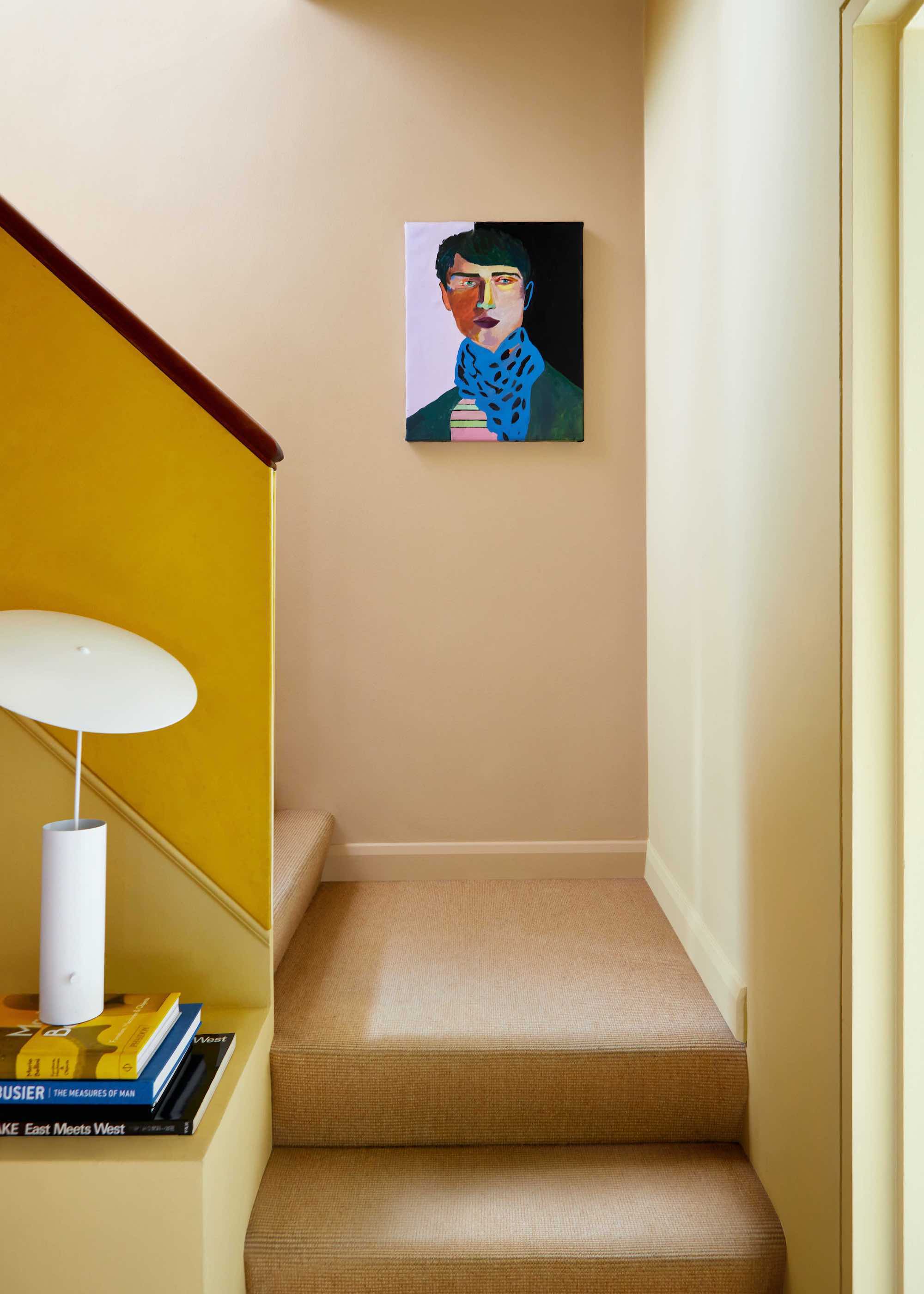
If you want your staircase to feel curated, not chaotic, coordinating your wall color with the stair flooring is a smart design flex to steal from the pros and that's where staircase wall ideas come in. “When wall colours are matched with flooring, harsh lines disappear, creating an effortlessly seamless aesthetic,” says Dominic Myland, CEO of Mylands.
Here, a low-pile wool carpet melts into the walls for a calm, tonal vibe, with the back wall in Mylands’ Sella carrying that warm color up the stairs. Wool is a solid shout for stairs — it’s naturally durable, stain-resistant, and super comfy underfoot, but it can be pricey and trickier to clean than synthetic blends. Whatever you choose, make sure the pile’s low and dense to avoid trip hazards — thick-pile carpet has no business being on the stairs.
“In this space, combining Sella on the back wall with a complementary shade, Wharf Sacking No.127 used on the right-hand wall and balustrade, adds subtle visual interest while maintaining a cohesive look and allowing the stairwell to speak with quiet confidence,” adds Dominic.
6. Make a Play for Ply

Birch-faced plywood interiors might not scream luxury, but in the right hands and space, it’s a modern design win. “We designed this staircase as both a practical feature, but also as a beautiful piece of furniture,” says Pereen d’Avoine, founder of Russian For Fish. “We used birch-faced plywood, which serves as a strong structural material, and has a characterful finish, with visible linear texture.”
Here, the birch ply wasn’t just used for the stair flooring; it was also formed into storage and a study nook. Birch ply is strong, lightweight, and cost-effective, with a subtle linear grain that adds character without being bonkers about it. “We used a white oil finish to keep the natural beauty of the material, and on the treads, we offered the option of a grit coating to prevent slipping,” adds Pereen. Birch ply isn’t the toughest stair flooring option out there — it’s prone to denting and will need really thorough sealing to avoid stains — but for minimalist vibes for less loot, it’s a clever, contemporary shout.

Founded in 2006 by third-generation architect Pereen d'Avoine, Russian For Fish began as an entry for – and winner of – an architecture competition. Now, alongside co-director Nilesh Shah, Pereen offers a full range of architectural and interior design services, including new builds, ceiling-to-gable renovations, and extensions. Based in East London, the duo serve clients across the capital and the South East.
7. Get the Paintbrush Out
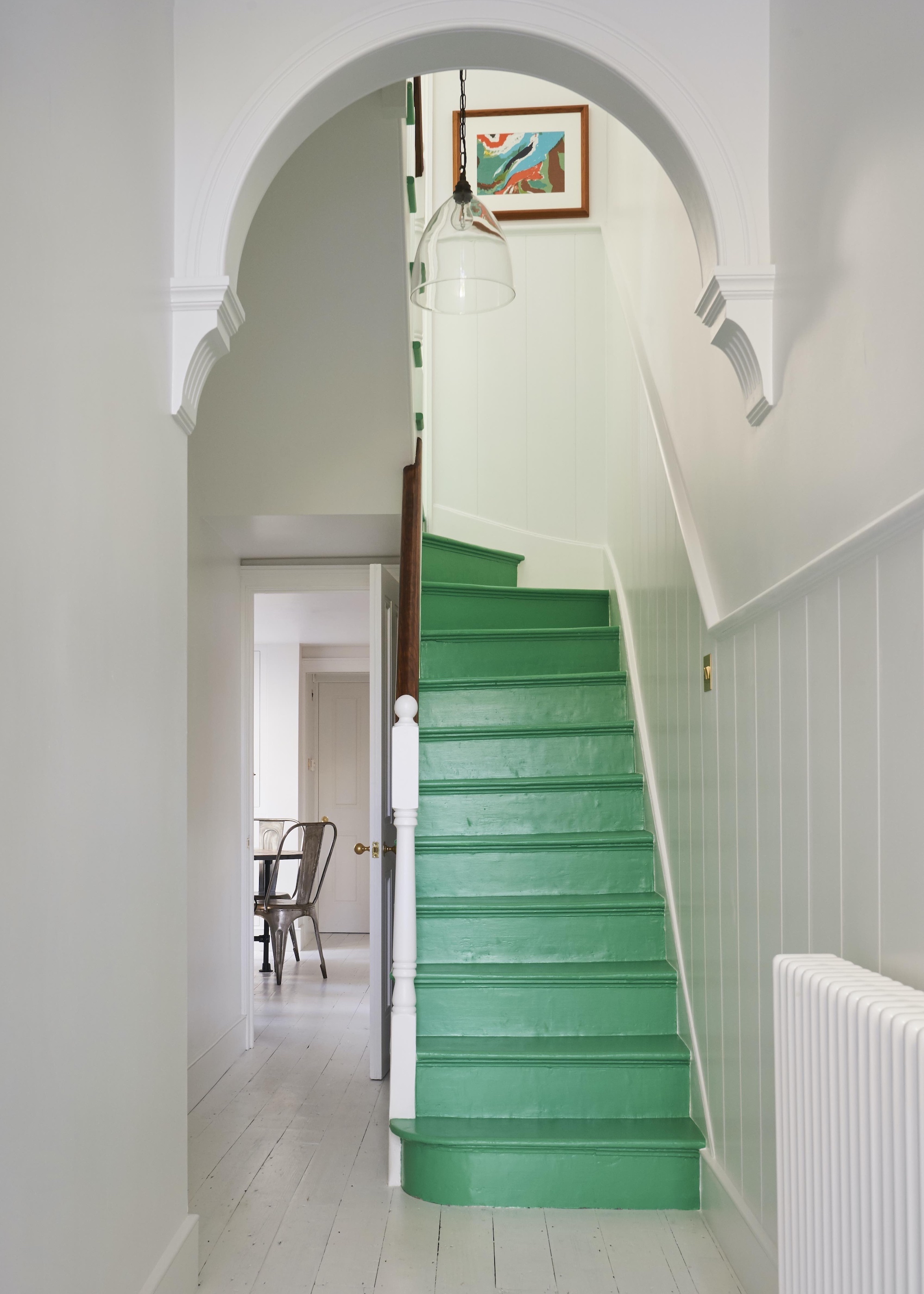
If you’re aiming for a quick glow-up, painting your existing stair treads is a brilliant way to inject personality without breaking the bank. “We wanted to create an entrance that felt creative and vibrant, to match the energy of the street the property is in,” recalls interior designer Olivia Outred, who chose her favourite Annie Sloan’s Antibes green to jazz up the stair flooring in this East London rental. “The green was chosen to add an off‑beat feel; something that doesn’t match, yet feels right,” she adds.
Painted staircases are great for a funky refresh, but you’ve got to pick the right paint: go for specialist floor formulas in satin or semi‑gloss, which are designed to resist scuffs, wash up well, and offer some grip. Prep is also key. Sand, prime, then roll on two thin coats and let them cure for at least three days before use.
The downsides of painted stair flooring are that the finish can chip quite badly over time, and you won’t get any protection from noisy footsteps, but for low‑cost, creative impact, it’s a bold, budget‑friendly move.
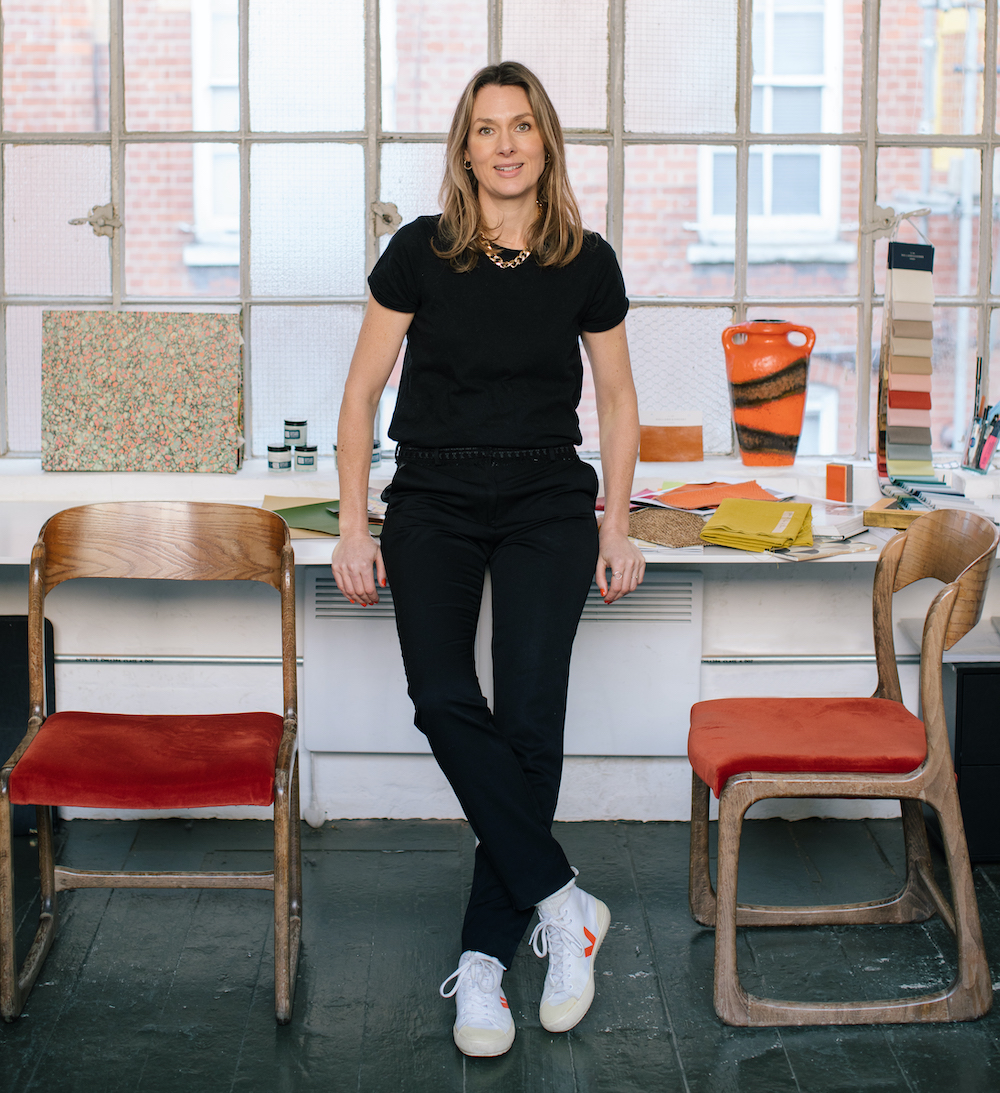
Olivia Outred, who launched her own studio in 2014, leads a tight-knit team of six designers, guiding every project with a fresh take on classic style. A self-confessed colour enthusiast and art-lover, her interiors are full of life and character, each piece of furniture is worthy of conversation and each room feels harmoniously coordinated but not staged.
8. Take a Look at Limestone

Limestone stairs lend a timeless, classical feel that will anchor your entrance area with quiet gravitas. “The limestone staircase is a striking focal point in this double‑height entrance,” says Samantha Liu, founder of Untold Interiors. “We chose a dark stained wooden handrail to add elegance as well as bring richness and depth to the neutral colour palette.”
This stone flooring's subtle earth tones and durability make it ideal for high‑traffic use, though any stone can feel hard and echoey on a staircase. The solution is to bring in shape and texture, perhaps add some upholstered seating nearby, and introduce warm lighting. “The curved black anodized steel spindles and fluted wall paneling really helped to accentuate the hallway's proportions here, as well as bring softness to this space,” adds Samantha.
With thoughtful accents and spindles with a striking silhouette, limestone stair flooring can deliver classic elegance that feels unexpectedly modern, never cold or cavernous.
9. Mix it Up

Mixing wood treads with painted risers is a slick upgrade on the typical all-wood staircase. It’s a solid move that can result in a staircase that feels lighter and brighter, which is especially beneficial in open-plan kitchens like this one.
“Here, the combination of painted risers and wood treads creates a refined contrast that feels both tailored and intentional,” says Rachel Morrison, principal designer of Morrison Interiors. “The painted risers visually lighten the staircase, allowing the curve to read as more sculptural and airy, while the wood treads anchor the design with warmth and natural texture. Together, they complement the home’s palette and materials, bringing a sense of elegance and cohesion to the space.”
Marrying two materials is a winning formula: the wood brings in natural character and durability, while the painted risers offer a chance to play with color or go tonal for a subtler effect. Painted risers can prove easier to touch up than full timber, too, but be sure to use a durable paint that can handle knocks.

Rachel Morrison is a creative force in the design world, known for bringing a fresh outlook and dynamic energy to the firm. Her collaborative approach and keen attention to detail ensure that every project reflects unique lifestyles, blending functionality with deeply personal touches.
10. Add Character With Reclaimed Cast Iron

Cast iron might not be the obvious go-to for indoor stair flooring, but in spiral form, it can deliver serious style in a compact footprint. Inspired by the hothouses at Kew Gardens, HSI Designs sourced a reclaimed cast iron staircase to lend charm and authenticity in this greenery-filled space with cabinetry by Chamber Furniture.
“The cast iron staircase came from the front of a Georgian terrace house in Suffolk. It was ideal, because it included a balcony, which gave us enough material to make the mezzanine landing,” explains interior designer Lyn Goddard. “Buying an original cast iron staircase can be problematic; this one was taller, so we had it adjusted, but with the right team of craftsmen, most things can be adapted to fit a new home.”
Cast iron is incredibly strong and full of character, though it is also very heavy and installation takes pro skills. A painted finish is recommended for warding off rust in damp zones, like basements and garden rooms. Not great for lugging furniture upwards, we’ll admit, but a spiral in cast iron like this can be a sculptural joy, and the kids will be totally enchanted.
Chic Entryway Finds
FAQs
What Type of Flooring Is Best on Stairs?
The best type of flooring for stairs will offer durability, safety, and style. Hardwoods like oak, walnut, and ash (in both solid and engineered formats) are all classic choices that offer longevity, natural beauty, and a solid underfoot feel, but they can be noisy and are not especially kind on unslippered toes.
If comfort and noise reduction are your priority, go for a good quality low-pile carpet designed for high-traffic areas, whether that be a snazzy runner or full-width fit. Natural textiles like sisal and seagrass are also popular on the stairs, as they’re very hardwearing and hide the dust well.
For something sleek and statement-making, materials like natural stone or polished concrete work well in contemporary homes, but will be cold underfoot and can be a bit unwelcoming or commercial without a runner. Whatever you choose, look for stair flooring with a good grip or add anti-slip treatments. Stairs are potentially hazardous, and safety should always be a big part of the decision process.
Whether you go bold, classic, or totally off-piste, there’s more than one way to step up your stair flooring game, and don’t be afraid to mix materials for added depth. The right flooring can totally transform your hallway’s energy and not just at ground level — so give those stair treads the attention they deserve.

Linda is a freelance journalist who has specialized in homes and interiors for more than two decades, and now writes full-time for titles like Homes & Gardens, Livingetc, Ideal Home, and Homebuilding & Renovating. She lives in Devon with her cabinetmaker husband, two daughters, and far too many pets, and is currently honing her DIY and decorating skills on their fourth (and hopefully final) major home renovation.

